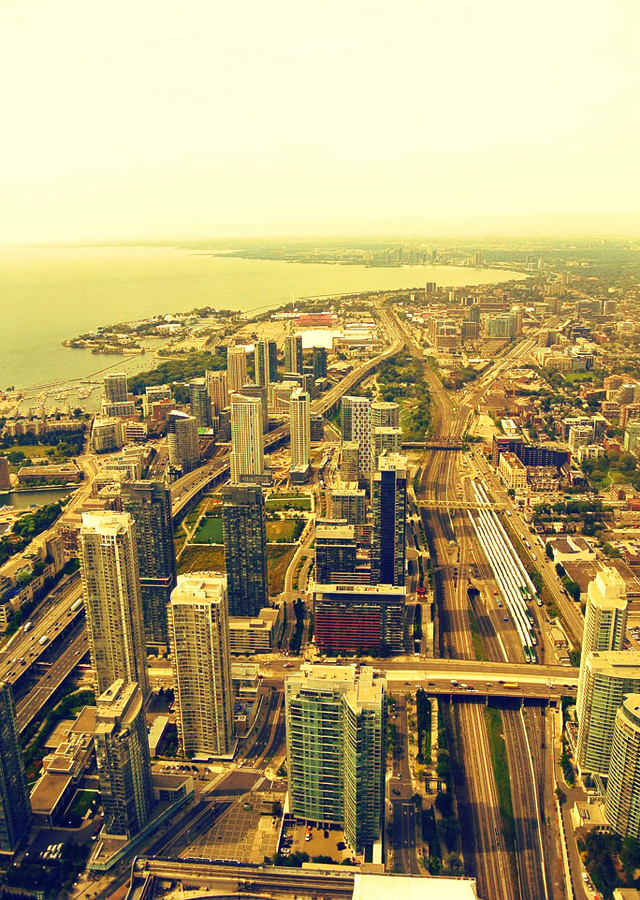Summer is Ontario’s busiest season, especially in the lake regions, the wine country, and around Niagara Falls. The weather is warm—often hot—and everything is open. Many summer theaters, beach destinations, and parks operate only between May and October.
If you don’t need to travel in July and August, though, you’ll often find better weather (sunny skies, moderate temperatures, and lower humidity) in early autumn. October is the peak of the foliage season, when weekend leaf peepers flock to the Ontario countryside. Fall visitors can avoid the crowds by staying in the cities on weekends and heading for the country during the week.

Ontario is home to the nation’s capital, Ottawa, and one of its biggest cities, Toronto. Photo © Kurtis Garbutt, licensed Creative Commons Attribution.
Late spring, from May to early June, is also a good time to travel in Ontario. Although you’ll need to be prepared for some rainy days, it’s relatively quiet, with fewer travelers and moderate shoulder-season lodging prices. Avoid late spring in the north or if you’re planning to hike, canoe, or camp; it’s black fly season, and the mosquitoes can be fierce, too. You’ll encounter fewer pests in late summer or fall.
Ontario’s winter, which begins in November and can continue into April, is cold and snowy—the season for skiing, snowshoeing, and skating. If you dress for the weather, it’s not a bad time for a city break; in Toronto and Ottawa the cultural calendars are full, and you can often find excellent lodging deals.
United States citizens need a valid passport, passport card, or Enhanced Driver’s License for travel to Canada.
All other visitors need a valid passport and may need a visa. Visas are not required for citizens of the United States, United Kingdom, Australia, New Zealand, Mexico, Singapore, Japan, South Korea, Israel, and most Western European countries for stays in Canada of less than six months.
No special immunizations or vaccinations are required to visit Canada, but it’s always smart to ensure that your routine immunizations are up-to-date, particularly if you’re traveling with children.
Ontario’s largest airport is Toronto’s Pearson International Airport, with flights from across Canada, the United States, Europe, the Caribbean, Latin America, and Asia. Ottawa is another air gateway, with flights from major Canadian cities, along with several U.S. and some European destinations.
VIA Rail, Canada’s national rail carrier, can bring you to Ontario from across the country, whether you’re starting from Vancouver, Jasper, Edmonton, Saskatoon, Winnipeg, Montreal, or Halifax. From the United States, Amtrak has train service from New York City to Niagara Falls and Toronto. Bus travel is a reasonable option, too, from the northeastern United States or eastern Canada.
Toronto’s comprehensive public transportation system makes a car unnecessary if you’ll be staying in the city. Ottawa and Niagara Falls are also easy to navigate without a vehicle. Otherwise, outside the province’s urban areas, you’ll have more flexibility if you drive or rent a car.
Excerpted from the Second Edition of Moon Ontario.